FolkWorld #54 07/2014
T:-)M's Night Shift
These days the term World Music is utilised by the music industry to market the mix or fusion
of traditional and folk musics of non-Western cultures with contemporary pop and rock music.
That's been a long way since the term World Music emerged in ethnomusicology during the 1970s
to define the music of world's peoples.
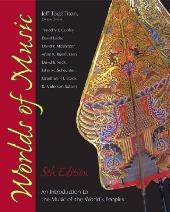 Jeff Todd Titon (ed), Worlds of Music - An Introduction to the Music of the World's Peoples.
Wadsworth Publishing,
2014, ISBN 978-0-534-59539-5, pp610
Jeff Todd Titon (ed), Worlds of Music - An Introduction to the Music of the World's Peoples.
Wadsworth Publishing,
2014, ISBN 978-0-534-59539-5, pp610
The first edition of Worlds of Music - An Introduction to the Music of the World's Peoples,
edited by Jeff Todd Titon, blues guitarist and professor of music at Brown University,
appeared in 1984, designed to introduce undergraduates to the study of music the world over.
It eventually became the best-selling textbook in its field.
For the new 2014 edition, renowned ethnomusicologists have been writing again and expanding articles
in their field of expertise. Features about China, Eastern Europe and the Arab World are new.
The Japan chapter has been deleted, but is still online, as is
an online resource center with supplementary material
@ academic.cengage.com.
The opening chapter, an introduction to ethnomusicology, outlines The Soundscape and The Music-Culture,
asks What Is Music?, and discusses structures in music such as
rhythm, melody, pitch, timbre, decorative tones (ornaments), scales, harmony, chords ...
Last but not least, Jeff Todd Titon introduces a music-culture model based on music as it is performed,
including sound and structure related to culture and community.
In the end, chapter 11 teaches how to conduct fieldwork and gather reliable information.
We enourage you to seek out a nearby musical world, to observe it in person, to talk with the people involved in it, to document it with
recordings and photographs, and to interpret the information in a project that will contribute to knowledge about today's
musical activities.
But we skipped the case studies, which are not meant to be comprehensive but showcase
the acoustic ecologies of several worlds of music:
North America (music of the Navajos, Native American flute revival, black music),
Africa (Ewe, Mande, Dagbamba, Shona, BaAka),
Asia such as India (Carnatic music, Raga),
Indonesia (Gamelan)[34]
and China, Latin America (Nueva Cancion,[27] Andean music),
"Arabia" (Takht ensembles, Bedouin culture).
The chapter about Europe had been written by Timothy J. Cooley, associate professor of Ethnomusicology at the
University of California-Santa Barbara and editor of the
Ethnomusicolody magazine.
He examines what makes the musics of Europe European.
- European music tends toward rhythmic organization of even pulses in repeating groups of two or three beats.
Similarly, melodic structures tend towards pairs of melodic ideas and repeating strutures.
- The vast majority of European music uses either major or minor scales.
Melodic pitches emphasize the most important pitches of a scale, and these in turn function in the harmonic structure of the music.
- Much of the beauty of European music comes in the subtle variation and ornamentation of these simple structures.
- This region's most unique contribution: harmony.
Europe seem to have most fully developed the concept of simultaneous pitches that create meaningful sounds independent of melody.
He selected the Podhale area in the alpine Tatra Mountains of southern Poland as an example.
This is a multi-cultural and multi-religion region where Poles, Belarussians and Ukrainians live together,
with strong musical connections to the Carpathian regions of Moravia, Slovakia and Hungary.
The muzyka Podhala, the folk music of the Górale (mountaineers)
is based on the nuta concept:
Nuta (plural nuty) literally means note, but Górale musicians use it to refer to a melodic idea or tune family.
The point is that any given nuta is not a fixed melody, but an idea that is realized only in performance, and is
varied with each repetition. Any audio recording or transcription of a Górale nuta presents one realization of the
melodic idea, not a final, fixed melody.
Well-known is violinist and singer Krzysztof Trebunia-Tutka,
born in 1970, who is rooted in the music of the Podhale region and has played with his family's band(s).
He is a traditional musician in the sense that he comes from a long line of family village musicians, he is respected
in Podhale as one of the finest musicians and dancers in the muzyka Podhale style, and he is an excellent teacher.
Traditional in this sense means doing things as they were done in the past, the way one's parents, grandparents,
and as in Krzysztof's case, even great-grandparents did things. Yet Krzysztof is a modern, cosmopolitan, twenty-first-century
global citizen. He believes traditions must change and adapt in order to stay alive in the present day. Therefore,
Krzysztof is comfortable and capable playing the violin, shepherd's flute, or dancing po góralsku in a
local-style costume as his great-grandfather would have done, and on the same day playing on a festival stage before thousands
of fans with a reggae band from Jamaica or a rock-fusion band from Warsaw.
In 1991 the Trebunia-Tutka family band made a worldbeat fusion recording with
Jamaican reggae band Twinkle Brothers which launched Krzysztof's international career.
The impetus behind this particular worldbeat fusion was Włodzimierz Kleszcz, a politically active radio producer from
Warsaw. As a way of protesting against the Communist Party, Kleszcz actively promoted certain forms of popular and folk
music, especially what he called black and pan-African influenced music associated with struggles for human independence.
His interest in reggae derived from these concerns, but until the end of communist political hegemony in 1989, he
avoided Polish folk music because he associated it with communist propaganda. Dramatic social change requires dramati
change in the use and conception of musical practices as well. After the fall of communism in 1989, Kleszcz reassessed his
relationship with Polish folk music and became concerned that the Western popular music that he promoted might threaten
the music he formerly shunned. His idea was to combine a Polish folk genre with a popular genre to create something that
Poland's youth would listen to, with the hope that this would increase their interest in Polish folk music. In 1991 Kleszcz
came up with the idea of trying to combine a traditional Górale band made up of a father, Władysław Trebunia, and two
of his children, Anna and Krzysztof, with a traditional reggae band, the Twinkle Brothers.
The cassette [Twinkle Inna Polish Stylee: Higher Heights], which centers on the legend of Juraj Jánošík, an
early-eighteenth-century zbojník (highway robber) today employed as a Robin Hood-like symbol of freedom and justice,
rose to number nine on the World Music Charts Europe in October 1993.
There are three further case studies. Cooley asks How does a local musial practice adapt to a globalizing world?
by analizing their song "Krzsesany Po Dwa" (Going to the Village) from 1992:
The dub establishes the sound as reggae; the violins, the tune that they play, and Górale dialect text signal worldbeat fusion;
a Polish listener and others familiar with muzyka Podhale will experience the piece as Górale at least on some level.
Secondly, he examines the folk-jazz-rock fusion of Bulgarian wedding music, "Kurdzhaliiska Ruchenica," by Yuri Yunakov (saxophone)
and Ivo Papasov (clarinet).[39]
Thirdly, "Žuta Baba", a version of the traditional Bosnian village singing called šaljive pjesme (joking songs),
sung by students of Wesleyan University (ft. Tim Eriksen),[44]
but is usually considered appropriate for elderly women or men.
It is a very informative and really detailed text, including pictures, photographs, maps, musical transcriptions,
lyrical examples and stave notes. Timed listening guides are keyed to the musical examples on the additional 4-CD set
that contains all recordings of the music discussed.
Thankfully, Cooley had chosen Poland as a case study. Other indigenous musics, Celtic music for example,
have already been better covered. Though - there are many issues that need some further investigation.
Over the years we discussed a couple of books dealing with traditional music and dance in Ireland – from Boreen to Broadway
so to speak.[43]
In particular, Barbara O'Connor asks in The Irish Dancing: Cultural Politics and Identities, 1900-2000:
What can Irish dancing bodies tell us about culture, history and politics?
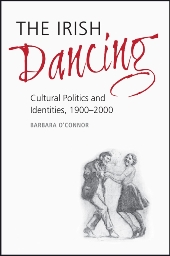 Barbara O'Connor, The Irish Dancing - Cultural Politics and Identities, 1900-2000.
Cork University Press,
2013, ISBN 978-1-78205-041-4, pp192, €39.00
Barbara O'Connor, The Irish Dancing - Cultural Politics and Identities, 1900-2000.
Cork University Press,
2013, ISBN 978-1-78205-041-4, pp192, €39.00
She explores the changing cultural identities – national, ethnic, gender, social class, postmodern, global –
of dancing Irish men and women over the course of the 20th century, from the local (traditional dance as entertainment
for everybody) to the national (creating a corporate feeling or segregating)
and global (a distributed product all over the world).
Seven chapters examine various points in time. The beginning is marked by the first Irish céilí in London in 1897,
organised by the Gaelic League, the main organisation for the promotion of cultural nationalism.
The Gaelic Revival, the term now given to the cultural nationalist movement that emerged in Ireland towards the end of the
nineteenth century, was characterised by the promotion of what were widely perceived to be distinctively Irish cultural
practices. This was regarded as necessary preparation for the overturning of colonial British rule and the formation of an
independent Irish state.
The objective was to revive the Irish language, customs and folkways of traditional Ireland, which were perceived
to have been obliterated by the colonists. They envisaged a reclaiming of a culture regarded as distinctive, pure and
authentic.
Gaelic League leaders, notably Pádraig Pearse, realised that music, song and dance brought in more people
than the political debates. Eventually it became an important part of the activities. Search parties travelled to
Ireland, largely Co. Kerry, to discover and record traditional dances and create an authentically Irish dance canon
that, in their view, would accurately reflect the Irish nation.
The new dance canon was shaped by people who had selective and definite ideas about how best to represent the spirit of the
Irish nation through the dancing body.
They created dance steps and formations, and specified correct bodily techniques such as hold, posture and tempo.
For example, ...
Don't hug your partner round the waist English fashion. When swinging hold her hands only ... In short be natural,
unaffected, easy - be Irish, and you'll be all right.
The end, for the time being, is marked by a certain step-dance routine as the interval act
in the Eurovision song contest in 1994, which led to the production of a full-scale music and dance show.
Riverdance achieved extraordinary critical and commercial acclaim,
brought step dancing into popular realm and were an inspiration for new theatrical dance shows.
Irish dance became fashionable again to watch, practise and perform.
Young dancers ...
expressed a preference for performing in the shows over the competitions.
They associated the solo dancing and the short three-minute performances of competition with high levels of stress.
They enjoyed the performances for tourists and felt more relaxed:
At feises you are being judged, people waiting for you to make a mistake ... here you are being complimented.
Inbetween the London céilí and the Riverdance show had been traditional dance as the most common leisure
activity for the majority of young people during the first half of the 20th century.
Rural dance halls were the most common places for meeting prospective marriage partners.
The 1920s/30s were marked by the more prominent role of the Catholic Church.
They opposed foreign dance (jazz), deemed to be inauthentic, impure, unhealthy and dis-graceful,
especially as dance was perceived sinful and associated with female sexuality.
Eventually, the Irish government introduced the Dance Halls Act of 1935 in order to
control and supervise places used for public dancing.
The following years and decades saw a decline in set dancing until the huge revival in the 1970s.
Over the intervening years, the American diaspora
played a critical role in preserving traditional music and dance,
American tap dancing evolved from Irish step dance,
and, last but not least, Riverdance lead dancers, Michael Flatley and Jean Butler, were Irish-American.
Both the global Irish diaspora and the success of this Irish dance phenomenon were instrumental
to invigorate Irish culture both nationally and internationally and
provide a sizeable market for Irish music products.
The Riverdance phenomenon stands as a pivotal point within Irish history in that it captured the essence
of globalization, along with the energy and drive of a nation on the cusp of an economic boom. It presented
a new Irish identity which was dynamic, optimistic, modern and integrative to the world.
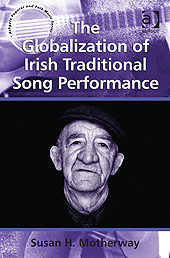 Susan Motherway, The Globalization of Irish Traditional Song Performance.
Ashgate,
2013, ISBN 978-1-4094-3423-8, pp228, £55.00
Susan Motherway, The Globalization of Irish Traditional Song Performance.
Ashgate,
2013, ISBN 978-1-4094-3423-8, pp228, £55.00
The Globalization of Irish Traditional Song Performance in the Ashgate Popular and Folk Music Series
explores the forms of interaction between the local and the global.
Susan Motherway is a lecturer in music at the Institute of Technology, Tralee,
contributor to The Companion to Irish Traditional Music[47]
and Ancestral Imprints: Histories of Irish Traditional Music and Dance,[49]
plays concertina, flute and piano and has has been a long-time performer with
Siamsa Tíre, The National Folk Theatre of Ireland.
What is it when we are talking about such thing as Irish traditional song? For sure, it is not homogeneous.
Thus the subject is the various cultural divides that separates the 'Irish' people into different communities.
- The Temporal Divide (Timeline)
- The Classical Episode:
Turlough O'Carolan[20] was attempting to bridge the divide between the Bardic tradition and the music of the Baroque;
Thomas Moore[37] set Hiberno-Irish verses to ancient harp tunes and provided arrangements for voice and pianoforte.
- The Country Episode:
Country 'n' Irish emerged as a transnational genre as a result of Irish emigration.
- The Celtic Episode:
The term has been used as a marketing tool to categorize traditional music from the Celtic countries,
increasingly employed to refer to musical hybrids with western popular musics or New Age easy-listening music.
- The World Music Episode:
The grouping of traditional and folk musics with contemporary pop and rock music,
e.g. the Afro Celt Sound System[10]
is renowned for their fusion of urban dance music with the ethnic styles of Africa and the Celtic countries.
- The Ethnic Divide (Minority groups living in Ireland)
- The Traveller Community:
Musicians such as the Pecker Dunne[50]
are recognized for their contribution to the folk revival in Ireland during the 1970s.
- The Ulster-Scots Community:
The Plantation of Ulster in the 17th century brought Scottish settlers
with cultural traditions closely bound to those of Scotland in respect to language, music, song and dance.
- The Language Divide (Status of minority languages and their use by Irish artists)
- Irish, the ancient Gaelic Language of Ireland.
- Hiberno-English, a dialect of the English language spoken in Ireland.
- Ullans, the Ulster-Scots speech in Northern Ireland.
- Shelta (Cant or Gammon), the (once secret and private) language of the Travelling People.
- Yola, the dialect of Forth and Bargy in Co. Wexford, from 12th century French, Flemish, Danish and English mercenaries
- The Political Divide (Political songs as means of contesting local politics, forging social unity, maintaining ethnic division and fighting social injustice)
- Orange Song:
Brass bands parading at 12th of July marches that commemorate the victory of William of Orange at the Battle of the Boyne in 1690 AD.
- Irish Rebel Songs:
Expressing and recording the struggle of the peasantry to take possession of the land and the nationalist yearnings of the middle class.
- Civil Rights and the Folk Revival:
Christy Moore's song repertoire, for example, is a collection of traditional Irish songs and contemporary folk songs,
reflecting the political ideals of socialism and the civil rights movement.
- The Institutional Divide (Institutionalization of music to represent, influence or control traditional practice)
- Government Agencies,
though under-funded due to the belief that it did not need development and traditional music was a natural resource of an inherently musical people.
- Education:
The inclusion of traditional music in teaching has greatly advanced;
new technologies appeared, incl. online learning systems
- Voluntary Organization and Interest Groups, such as Comhaltas Ceoltóirí Éireann,
to safeguard and perpetuate the Irish song tradition (festivals, competitions, summer schools, clubs, academic societies, ...).
- The Service Industry,
collecting, collating, analysing and distributing traditional music products.
(e.g. Irish Music Magazine)
- The Music Industry:
record labels, internet sites, broadcasters, retailers, engineers, ...
- The Geographical Divide (Irish diaspora through emigration)
- Example Newfoundland:
The relative isolation has contributed to the preservation of the song repertoire, maintaining an Irish identity.
I haven't read such a both interesting and entertaining book about Irish Music for a long time.
Susan Motherway examines and discusses Irish history, society and culture in a nutshell.
Irish singers and songwriters are considered by the score:
Delia Murphy[51]
and Tim Dennehy,[28]
Tommy Sands[40]
and Roy Arbuckle,[21]
Pádraigín Ní Uallacháin[47]
and Cara Dillon.[54]
Where oh where is our James Connolly
Where oh where is that gallant man
He is gone to organise the Union
That working men they may yet be free
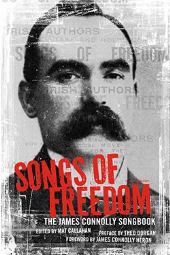 Mat Callahan (ed), Songs of Freedom - The James Connolly Songbook.
PM Press,
2013, ISBN 978-1-60486-826-5, pp80, US$12.95
Mat Callahan (ed), Songs of Freedom - The James Connolly Songbook.
PM Press,
2013, ISBN 978-1-60486-826-5, pp80, US$12.95
Where oh where is our James Connolly ...,
one verse of Patrick Galvin before turning into James Connolly's cheerful "A Festive Song".
Nine lyrics are written by Connolly himself, three are about him
(Dominic Behan's "Connolly Was There", the traditional "James Connolly the Irish Rebel",
and as already said Patrick Galvin's "Where Is James Connolly"),
plus Jim Connell's classic labour song "The Red Flag".
Mat Callahan set himself to the task of making modern music (Celtic and American folk rock)
out of obsolete revolutionary songs. He wrote original music to Connolly's lyrics,
sometimes he used old airs such as "Clare's Dragoons," designated by Connolly himself.
The instrumentation is acoustic: guitar, fiddle, accordion, uilleann pipes, whistles,
and Irish harp, plus bass and drums.

The James Connolly Songs Of Freedom Band, Songs of Freedom.
PM Press, 2013.
A particular body of song in Ireland are Rebel Songs, i.e. topical songs,
mostly with a Nationalist, rarely with a Socialist agenda.
The Irish socialist leader and union organiser
James Connolly (1868–1916),
shot dead by a British firing squad because of his leadership role in the Easter Rising of 1916,
is casually mentioned by Motherway, but she did not note that he once wrote:
No revolutionary movement is complete without its poetical expression.
James Connolly loved a good song that spoke of liberty and justice, that scorned slavery and injustice,
and saw a necessity for the joyous, defiant singing of revolutionary songs.
Songs of Freedom - The James Connolly Songbook has been edited by Californian musician
Mat Callahan,
author of "The Trouble With Music"[32]
living in Bern, Switzerland, on the centenary of the 1913 Dublin lock-out,
and comprises three different songbooks:
- "Songs of Freedom" had been edited and published by James Connolly in 1907. Nine songs had been written by Connolly
himself, nine further pieces include songs from the 1798 United Irishmen rebellion,[4]
the 1848 Young Ireland movement, James Connell's "Red Flag" and "The Marseillaise".
- Three years after Connolly's execution on the eve of the Irish War of Independence
a concert commemorating the anniversary of his birth had been held in Dublin.
The "1919 Connolly Souvenir Program" is reprinted here as exact replica.
- In 1972, as The Troubles were unfolding in Northern Ireland, the Cork Workers Club published
the "James Connolly Songbook," based on a selection of songs performed in 1919.
It features 23 songs and poems, nineteen of which are by Connolly.
Connolly set his own lyrics to popular Irish (and some non-Irish) tunes, such as
"God Save Ireland" and "A Nation Once Again", "Cruiskeen Lawn" and "Sean O Duibhir an Ghleanna".
Altogether "Songs of Freedom" is a delightful song collection for history buffs and music connoisseurs alike.
Now wet your whistle, and ...
Come workers, sing a rebel song,
a song of love and hate;
Of love unto the lowly, and of hatred
to the great,
The great who trod our fathers down,
who steal our children's bread,
Whose hand of greed is stretched to rob
the living and the dead.
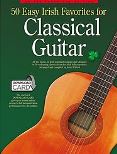
Commonly, traditional Irish music is accompanied by steel-strung guitar. There have been a couple of players though
adopting the classical nylon-strung guitar even to dance music (e.g.
Tim Edey),
[52]
even more so it is suitable to play melody on songs and ballads.
50 Easy Irish Favourites For Classical Guitar
contains 50 popular tunes from the Irish folk repertoire, including traditionals such as
"Bard of Armagh" to "Water Is Wide", "Ag Criost an Siol" to "Molly Malone",
and Carolan tunes
[20]
such as "Lamentation of Owen O'Neill" ("The Little and Great Mountain" aka "Si Bheag Si Mhor" is uncredited here),
those adopted by Thomas Moore
[37]
such as "Believe Me, In All Those Enduring Young Charms" and "Minstrel Boy",
and even some dance music (the jig "Swallow's Nest" or "St. Anne's Reel").
The tunes for easy and intermediate levels are written out in both standard notation and tablature.
Included is a download from the author's website with demonstration performances.
Jerry Willard is using a capo on the second fret, being convinced
that the lute-like higher
tessitura (range) makes the music
more authentic by clarifying
the counterpoint and bringing out the melody.
50 Easy Irish Favourites For Classical Guitar.
Amsco/Music Sales AM1008304,
2014, ISBN 978-1-78305-439-8, pp80, £14.95
Photo Credits:
(1ff) Book/CD Covers,
(7) Trebunie-Tutki,
(8) Warsaw Village Band,
(9) Irish Dancer,
(10) Mat Callahan
(from website/author/publishers).
FolkWorld - Home of European Music
 Layout & Idea of FolkWorld © The Mollis - Editors of FolkWorld
Layout & Idea of FolkWorld © The Mollis - Editors of FolkWorld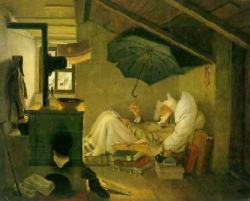


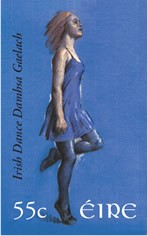


 Commonly, traditional Irish music is accompanied by steel-strung guitar. There have been a couple of players though
adopting the classical nylon-strung guitar even to dance music (e.g.
Tim Edey),[52]
even more so it is suitable to play melody on songs and ballads. 50 Easy Irish Favourites For Classical Guitar
contains 50 popular tunes from the Irish folk repertoire, including traditionals such as
"Bard of Armagh" to "Water Is Wide", "Ag Criost an Siol" to "Molly Malone",
and Carolan tunes[20]
such as "Lamentation of Owen O'Neill" ("The Little and Great Mountain" aka "Si Bheag Si Mhor" is uncredited here),
those adopted by Thomas Moore[37]
such as "Believe Me, In All Those Enduring Young Charms" and "Minstrel Boy",
and even some dance music (the jig "Swallow's Nest" or "St. Anne's Reel").
Commonly, traditional Irish music is accompanied by steel-strung guitar. There have been a couple of players though
adopting the classical nylon-strung guitar even to dance music (e.g.
Tim Edey),[52]
even more so it is suitable to play melody on songs and ballads. 50 Easy Irish Favourites For Classical Guitar
contains 50 popular tunes from the Irish folk repertoire, including traditionals such as
"Bard of Armagh" to "Water Is Wide", "Ag Criost an Siol" to "Molly Malone",
and Carolan tunes[20]
such as "Lamentation of Owen O'Neill" ("The Little and Great Mountain" aka "Si Bheag Si Mhor" is uncredited here),
those adopted by Thomas Moore[37]
such as "Believe Me, In All Those Enduring Young Charms" and "Minstrel Boy",
and even some dance music (the jig "Swallow's Nest" or "St. Anne's Reel").